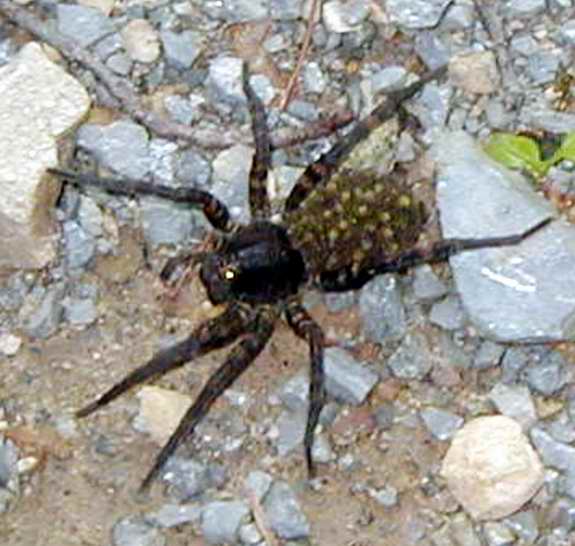|
Common
Name: Wolf Spider, Ground
Spider, Hunting Spider Scientific Name: Lycosa spp (Lycosa is Greek for wolf) The Wolf Spider is a relatively large (2-4 cm) spider that lives on the ground under dead leaves and branches. Its dark mottled colors provide the camouflage necessary for it to be an effective predator. Potpourri: Wolf Spiders were named due to the mistaken belief that they hunted in packs and that they chased and pounced on their prey in a wolf-like manner. In actuality, they are solitary hunters that hide in the brush and ambush their prey. Wolf Spiders have 8 eyes arranged in pairs. Two large eyes face forward for binocular vision, four small eyes in a row face forward for close-in vision, and two upward-looking eyes on the flanks scan sideways and backwards to detect predators. The tarantula is in actuality a species of the Wolf Spider genus, Lycosa tarantula, which is native to southern Italy. Although the bite of the Wolf Spider is harmless to humans, it was believed that the bite of the tarantula caused tarantism, a nervous disease characterized by hysteria that was prevalent in the region of Taranto, Italy in the 16th Century. It was supposedly cured by dancing the tarantella, a fast, whirling southern Italian dance for couples in 6/8 time. The male Wolf Spider courts the female by waving his pedipalps, appendages that contain the structure for holding sperm. This elaborate courtship is believed to have evolved to protect the male from being mistaken for prey. The female lays about 200 eggs in a woven silk sac that she drags around with her. When the spiderlings hatch, they are carried on the mother's abdomen for about a week before they become independent. |
